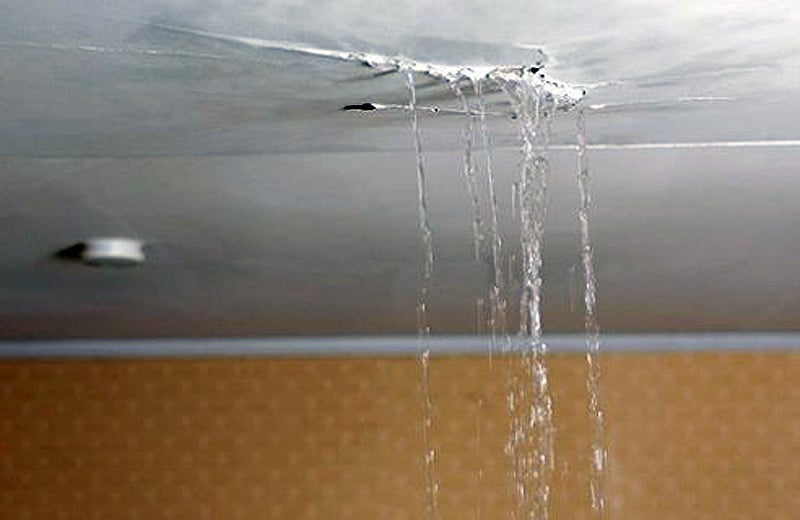Listed here down the page you can locate a lot of worthwhile expertise when it comes to Common Water Leaks In House.

Leakages not only trigger waste of water however can also cause unnecessary damages to your house as well as promote undesirable natural growth. Sadly, water leaks could go undetected considering that the majority of the pipework in our residence is hidden. By looking as well as comprehending for everyday scenarios that create leakages, you can secure your house from future leaks and also unneeded damages. Today, we will look at 6 leak causes that might be triggering your pipes to trickle.
Intruding roots
The majority of water leaks begin outside your house rather than inside it. If you observe a sudden reduction in water stress, say in your faucet, take some time to go out and also examine your lawn. You may notice wet spots or sinkholes in your lawn, which may mean that tree origins are invading water lines causing water to permeate out. You can have your plumber look for invasion, specifically if you have trees or shrubs near your residential or commercial property.
Corroded water systems
As time goes by, your plumbing system ages and rust such as corrosion may begin gnawing the pipelines. This might be the root cause of staining or warping on your water pipes. This asks for an inspection with your plumber promptly. Think about changing the pipelines since they are at a higher threat of deterioration than the newer models if our plumbing system is old.
Defective Pipeline Joints
The point at which your pipes attach is regularly the weakest link in the waterline. Pipe joints can wear away gradually, resulting in water leaks. Unfortunately, the majority of pipeline joints are not quickly noticeable. If you have noisy pipelines that make ticking or banging sounds, especially when the warm water is activated, your pipeline joints are possibly under a great deal of pressure. It is a good idea to have your plumber evaluate your system once a year.
Instantaneous temperature level modifications.
Severe temperature level modifications in our pipelines can create them to increase as well as contract suddenly. This expansion and also contraction might trigger fractures in the pipes, specifically if the temperature are listed below freezing.
Poor Water Connectors
Sometimes, a leak can be brought on by loose tubes as well as pipelines that supply your appliances. Most of the time, changing is what creates the loose water Links. You might discover when it comes to a washing equipment, a hose pipe might spring a leak because of drinking during the spin cycle. In case of a water connections leakage, you may discover water running straight from the supply line or puddles around your devices.
Blocked Drains
Clogged drains pipes might be aggravating and inconveniencing, however they can occasionally end up triggering an overflow causing burst pipelines. Keep getting rid of any products that might drop your drains pipes that can clog them to prevent such aggravations.
All the above are sources of leaks however not all water leaks result from plumbing leakages; some leakages might originate from roof covering leaks. All leaks need to be repaired quickly to stay clear of water damage.
Leaks not only create waste of water but can likewise cause unnecessary damages to your home and advertise undesirable natural growth. By looking and also recognizing for day-to-day circumstances that trigger leaks, you can protect your house from future leakages and also unneeded damages. Today, we will certainly look at 6 leakage triggers that might be creating your pipelines to trickle.
At times, a leakage can be created by loose hoses and pipes that supply your appliances. In case of a water links leakage, you might observe water running straight from the supply line or pools around your devices.
How To Check For Water Leak In Your Home
How To Check for Leaks
The average household's leaks can account for nearly 10,000 gallons of water wasted every year and ten percent of homes have leaks that waste 90 gallons or more per day. Common types of leaks found in the home are worn toilet flappers, dripping faucets, and other leaking valves. These types of leaks are often easy to fix, requiring only a few tools and hardware that can pay for themselves in water savings. Fixing easily corrected household water leaks can save homeowners about 10 percent on their water bills.
To check for leaks in your home, you first need to determine whether you're wasting water and then identify the source of the leak. Here are some tips for finding leaks:
Take a look at your water usage during a colder month, such as January or February. If a family of four exceeds 12,000 gallons per month, there are serious leaks.
Check your water meter before and after a two-hour period when no water is being used. If the meter changes at all, you probably have a leak.
Identify toilet leaks by placing a drop of food coloring in the toilet tank. If any color shows up in the bowl after 10 minutes, you have a leak. (Be sure to flush immediately after the experiment to avoid staining the tank.)
Examine faucet gaskets and pipe fittings for any water on the outside of the pipe to check for surface leaks.
Undetected water leaks can happen without the home or business owner even realizing. If you suspect a water leak, but not able to find the source. It is time to contact a professional water leak detection service, The Leak Doctor.
How To Find a Water Leak In Your Home
https://www.leakdoctor.com/blog/How-To-Check-For-Water-Leak-In-Your-Home_AE197.html

I hope you enjoyed reading our topic on Most Common Causes of Leaky Pipes. Thank you so much for finding the time to read through our blog. If you please take a moment to promote this post if you enjoyed it. We cherish reading our article about Top Causes of Home Water Leaks.
Book A Free Estimate